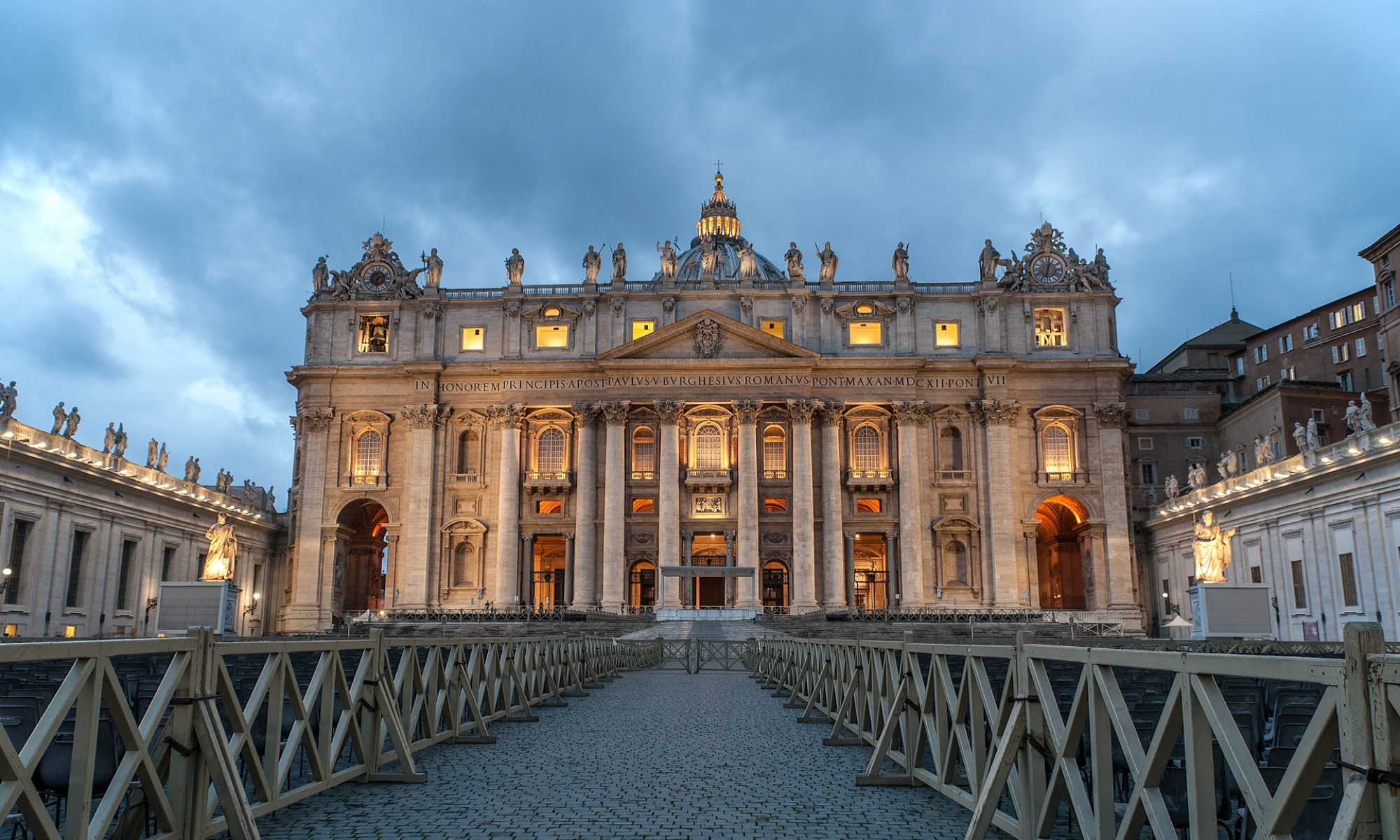27-02-2013 | Dr. Leonardo de Chirico
„Ratzingers interpretatie van de Bijbel is geladen met betekenissen die behoren tot de rooms-katholieke traditie, maar die niet kunnen worden teruggevonden in de tekst van de Schrift. ”
Benedictus XVI treedt morgen terug als paus. Zijn laatste theologische uiteenzetting was typisch rooms-katholiek, waarbij hij de roomse traditie teruglas in de Bijbel, aldus dr. Leonardo de Chirico.
De wereld was geschokt toen Benedictus XVI zijn aftreden als paus van de Rooms-Katholieke Kerk aankondigde. Eeuwenlang was het niet gebeurd dat een paus aftrad. Tot hun dood bleven zij in hun ambt. De paus deed zijn aankondiging in het Latijn, niet echt de voertaal van vandaag. Journalisten haastten zich naar latinisten om er zeker van te zijn dat zij zich niet vergisten, alvorens ze het nieuws de wereldkundig maakten.
Paus Ratzinger deed iets opvallend nieuws, maar hij deed het op een erg ouderwetse manier. Zelfs bij een van zijn laatste handelingen als paus was hij zowel modern als traditioneel. Daarin herkennen we de rooms-katholieke manier van doen: de traditie hooghouden, maar tegelijkertijd voortdurend veranderen.
De laatste ”lectio” (een soort theologische meditatie) die Ratzinger op 8 februari gaf aan een groep studenten van het grootseminarie in Rome geeft een goed zicht op zijn loopbaan als paus. Het was niet zijn laatste toespraak als paus, maar wel zijn laatste theologische uiteenzetting voordat hij zich terugtrekt. In zekere zin is deze lectio een soort prisma waarin heel zijn onderwijs uit de Bijbel in een notendop gezien kan worden.
De tekst was 1 Petrus 1:3-5, een heel compacte tekst vol theologische rijkdom. Benedictus XVI gebruikte al zijn catechetische vaardigheden om hem uit te leggen. Zijn commentaar is grondig, zoals je mag verwachten van een eersteklas theoloog. Toch laat het duidelijk de speciale rooms-katholieke mix zien van Bijbeluitleg.
Encycliek
Bij de introductie van de brief stelt Ratzinger dat het gaat om de „eerste encycliek” die de plaatsbekleder van Christus aan de kerk stuurde. Een encycliek is in het algemeen gesproken een rondzendbrief, maar technisch gesproken is het een brief die de paus stuurt aan bisschoppen, geestelijken, gelovigen en mensen van goede wil en die handelt over leerstellige en/of pastorale thema’s.
Vanaf 1740 sturen pausen regelmatig encyclieken. In ieder geval is het dus historisch gezien niet correct om 1 Petrus met een pauselijke term te beschrijven van 1700 jaar later. Zelfs als we de algemene betekenis van het woord encycliek (rondzendbrief) nemen, werd 1 Petrus niet als eerste nieuwtestamentische tekst geschreven. Paulus’ eerste brief aan de Thessalonicensen is waarschijnlijke het vroegste document van het Nieuwe Testament. Dus al voor Petrus zijn eerste brief schreef, waren er andere apostolische brieven.
Achter deze historische details zit de boodschap die Benedictus wil overdragen van een voortgaande continuïteit tussen Petrus die zijn brief schrijft en toekomstige pausen die hun encyclieken schrijven. De paus verbindt de Bijbelse brief aan moderne encyclieken en Petrus aan moderne pausen. Deze claim is hermeneutisch geladen met de rooms-katholieke uitleg van Petrus’ ambt en successie, maar komt niet op uit de tekst van de Schrift zelf.
Plaatsbekleder
Het is ook niet toevallig dat Benedictus XVI in zijn lectio spreekt over Petrus als ”plaatsbekleder van Christus”. Nadat hij terecht gememoreerd heeft aan de wijze waarop Petrus zichzelf introduceert als apostel, vervolgt hij met te zeggen dat Petrus aangesteld was als „de eerste apostel, de plaatsbekleder van Christus.” Petrus schreef vanuit Rome (het ”Babylon” uit 5:13), wat volgens de paus theologische betekenis heeft. Als plaatsbekleder van Christus en gezien zijn wereldwijde ambt gaf Petrus eerst leiding aan de Joodse kerk (Jeruzalem) en uiteindelijk aan de kerk uit de heidenen (Rome).
De titel ”plaatsbekleder” komt niet bij Petrus zelf vandaan. De apostel spreekt over zichzelf als ouderling tussen andere ouderlingen, een mede-ouderling (5:1). De tekst geeft geen enkele aanwijzing dat Petrus de titel ”plaatsbekleder” zou hebben ontvangen, wat dat ook moge betekenen. Petrus denkt niet over zichzelf als iets wat zijn mede-ouderlingen niet zijn.
Het is zelfs zo dat Petrus het hele volk van God beschrijft als „een uitverkoren geslacht, een koninklijk priesterdom, een heilig volk” dat geroepen is om de deugden van God te verkondigen. Het feit dat Petrus Rome definieert als Babylon kan weleens een apocalyptische betekenis hebben in plaats van dat het een verwijzing is naar zijn wereldwijde eerste pausschap. Weer is Ratzingers interpretatie geladen met betekenissen die behoren tot de rooms-katholieke traditie, maar niet kunnen worden teruggevonden in de tekst van de Schrift.
Er zit veel wijsheid in Benedictus’ laatste lectio over 1 Petrus. Maar het is wel een wijsheid die voortkomt uit bepaalde rooms-katholieke vooronderstellingen die bepalend zijn voor zijn manier van lezen en die niet door de Schrift zelf wordt geleid.
De auteur is theoloog en vicevoorzitter van de Evangelische Alliantie Italië. Deze bijdrage verscheen ook op reformation21.org.
